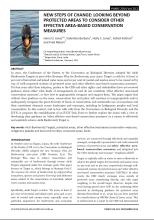Land Library
Bienvenue dans la bibliothèque du Land Portal. Explorez notre vaste collection de ressources en libre accès (plus de 74 000), comprenant des rapports, des articles scientifiques, des articles de recherche, des publications évaluées par des pairs, des documents juridiques, des vidéos et bien plus encore.
/ library resources
Showing items 1 through 9 of 15.This study presents a country-wide quantitative analysis of the Parliamentary Land Investigation Commission reports that were released to the public. The aim is not just to analyze the information contained in the reports, but also to elicit information they do not reveal.
A discussion note from Mekong Region Land governance (MRLG) summarizing findings and recommendations of a multi-stakeholder initiative and study tour conducted in Southern Laos, to study the social and environmental practices of two large scale companies holding large scale concessions in Lao PDR
For the past decade, GIZ has supported participatory land use planning, land registration and land titling as a vehicle for sustainable rural development in Lao PDR.
A comparative study of land rights systems in Southeast Asia and the potential of national and international legal frameworks and guidelines.
The April 2015 edition of Against the Grain -- a report by Genetic Resources Action International (GRAIN) on laws and mechanisms in Asia that result in land transfer from independent farmers to larger entities.
This report draws on the Land Matrix database to analyze and better understand the phenomenon of large-scale agricultural land deals. It focuses on:
» land acquisitions or investments (“deals”) targeting the Global South and Eastern Europe, including only low and middle income countries;
In 2010, the Conference of the Parties to the Convention on Biological Diversity adopted the Aichi Biodiversity Targets as part of the Strategic Plan for Biodiversity 2011-2020.
One of the most wellknown biofuel investments was that of Bioshape, which acquired approximately 34,000 ha in Kilwa District for the cultivation of jatropha.
The increasing importance of the Wildlife Management Areas (WMAs) in Tanzania, where 17 WMAs are now functioning and 22 others are in various stages of development, begs the question of what successes have been achieved and what challenges remain to be addressed if this Community-Based Conservati




